BY: JOHN DUDLEY
Spot and stalk is the most exciting and rewarding type of bowhunting.
Sneaking within bow range and getting a shot at a big animal tests every skill you have as a bowhunter. You have to strategize and constantly adjust your game plan to close in without getting busted. Then, when a split second of opportunity presents itself, you have to execute a flawless shot under pressure.
I credit the vast majority of my success to using this method, but I didn’t master it overnight. Today, I want to help you learn from my mistakes so you can use the spot and stalk method to strike like a bowhunting ninja!
1. Focus on Your Feet
Silence starts with your feet. Invest in some boot covers or bring thick wool socks that’ll keep you quiet as you creep within range.
I usually pack a pair of soft-soled shoes or Crocs along with my foot coverings or a step up is the new Sheep Feet sneaky shoes, so I can be quieter than with boots when closing the distance between myself and my target. But if you don’t have to worry about sharp objects, bare feet with thick socks is the ultimate combo.
This way, you feel the surface beneath your feet and navigate the terrain as quietly as possible.
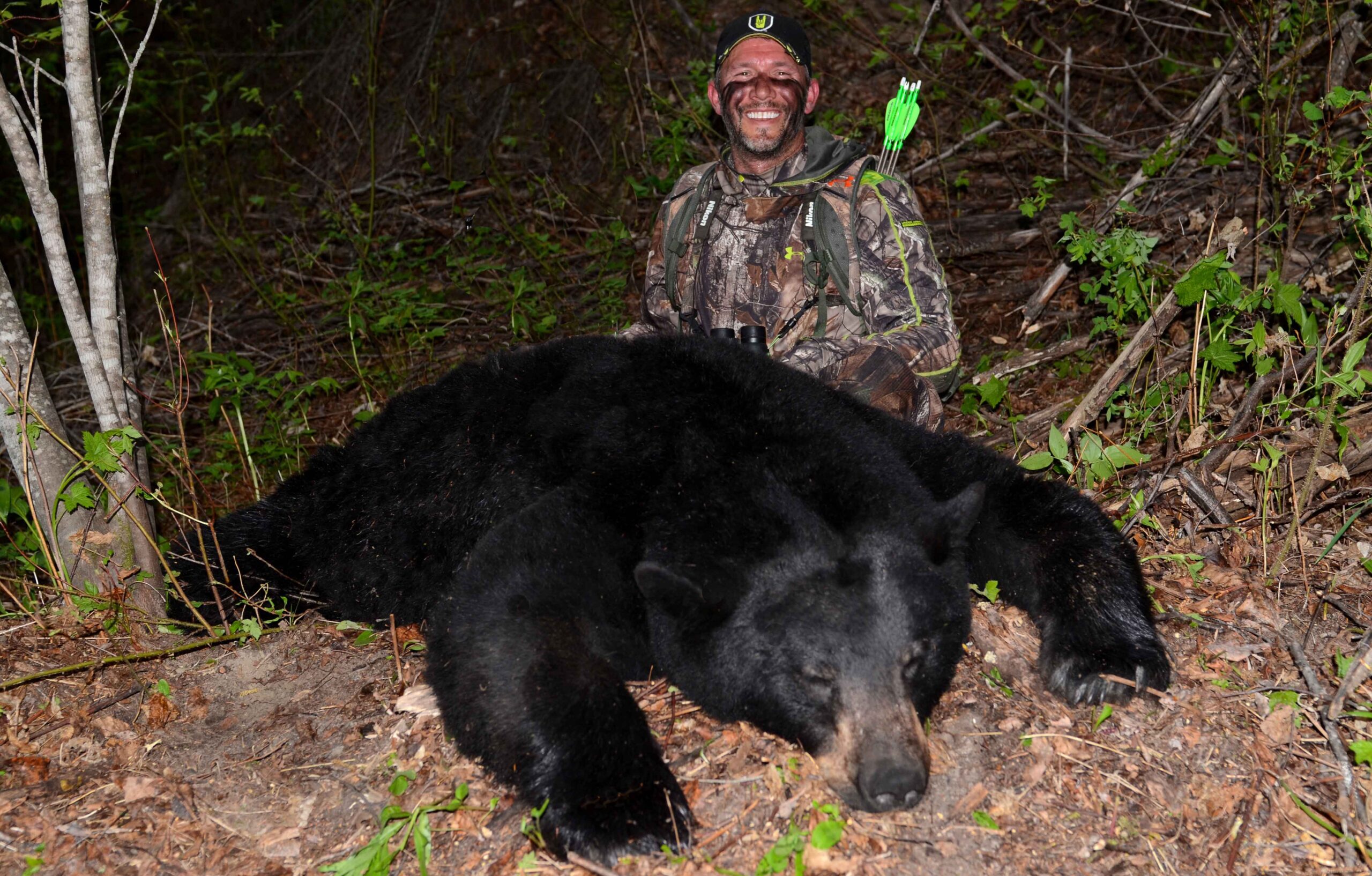
One of over two dozen bears taken on a wool sock stalk.
2. Conceal Your Face
Your face is the most exposed part of your body, and I’ve always relied on face paint to help conceal it. It’s easy to use, always ready to go, and never gets in the way.
Whether you use paint or a mask, conceal your face. Animals spend their entire lives in the surroundings you’re hunting them in. They know the shine of a bright face is abnormal, and they’ll be on alert immediately if they see it. Use Paint, Use a built in mask or best yet, USE BOTH. (Insert pic of me in face paint with mask)
3. Wear the Right Clothing
Choose a camo pattern that blends into your terrain from a distance. Some patterns look great on the shelf but horrible from 50 yards. I rely on Origin’s Raptor Camo patterns, which never let me down, I’ve had lots of good ones with subalpine coming in second. .
Besides the actual camo pattern, make sure your clothing is made from quiet material that doesn’t “swoosh” or sound like a plastic bag blowing through the brush.
4. Bring a Silent, Simple Chest Harness
A quiet binocular and rangefinder chest harness keeps these items close, allowing you to constantly glass and confirm distance. Choose a chest harness system that lets you crawl and quickly raise and lower your glass without making any noise.
I always keep my binoculars at the ready. This way, I can continually look at the animal to confirm its laying direction, where it’s looking, and where it’s moving. Glassing also helps me understand and take advantage of the terrain’s contours.
Using binoculars is the only way to see all this. Avoid harnesses with Velcro or noisy cables, and position your rangefinder close to your release hand. This way, you can quickly range and clip on the string to fire.

Jocko Willink and John Dudley heading in to battle the bulls with binos and rangefinders at the ready in their Sitka chest harnesses.
5. Add Adhesive Silencing Products
Adhesive fleece, moleskin, and the soft, fuzzy side of Velcro can make or break your spot and stalks.
These noise-deadening must-haves silence any piece of gear. I always cover the inside of my riser shelf with fleece to keep my arrow from banging and clicking.
I’ve also used it on release aids, roller guards, and belt buckles to prevent noise from accidental contact against other hard surfaces.
6. Always Know the Wind
A good wind-checker is perhaps the most important piece of equipment you can carry. Make sure it’s easily accessible, as you’ll constantly use it to confirm wind direction.
If you aren’t playing the wind while hunting, you shouldn’t be hunting at all, unless it’s upwind of my spot.
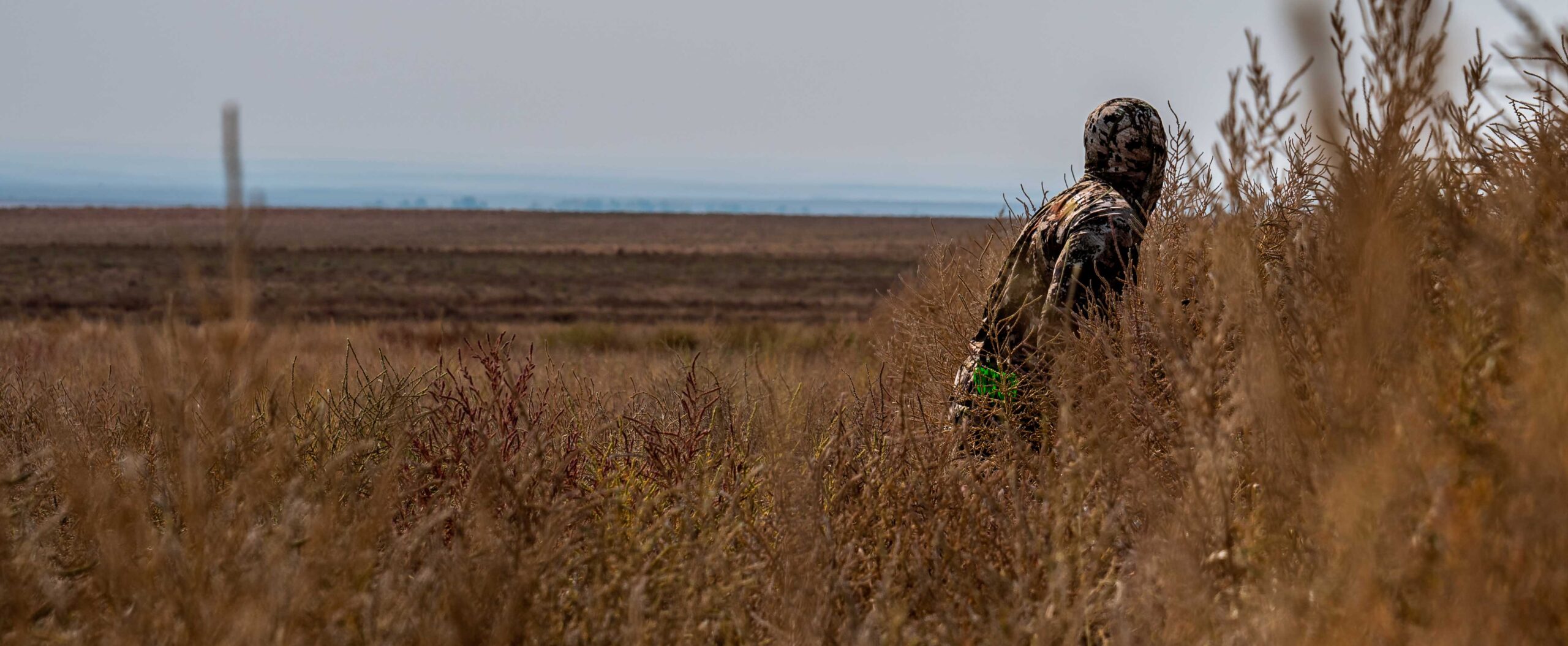
Dudley maneuvering his stalking position on a giant Colorado Mule Deer based on wind direction.
7. Use Contours and Shadows
Using your hunting terrain’s contours and shadows factors into your spot-and-stalk success.
Often, your hunting terrain’s contours are more pronounced than they may seem at first sight. Moving just slightly in one direction or another could be all it takes to put a small contour of the land between you and your target.
Staying in the shadows is also important. The sun is Mother Nature’s spotlight and can wreak havoc when you’re trying to make your moves. Analyze your surroundings and use any contours and shadows that may be available.
8. The Fine Line Between Fast and Slow
There’s a fine line between when you need to go fast and when you need to slow down. I learned about this line the hard way: moving too fast when I should’ve gone slow, and moving too slow when I should’ve been fast.
It’s an instinct you can only develop over time, but more importantly, as you learn your species. Each has its strengths and each has its weaknesses. Are you going to stalk a Turkey the same as you would a wild boar? No, one has the strength of 20X vision while the other has 20X smell. Soon, you’ll start to trust your gut.
9. Pump the Brakes
The time to be slow starts when you first spot the animal. Scan the terrain and look at the big picture so you can form an effective plan of attack.
Hunters often move in too quickly, especially on morning hunts when they try to make a stalk while animals are moving back to their bedding area. In the morning, an animal’s direction and speed are often unpredictable.
In fairly open country, where you can watch the animal bed down, you’re much better off. This way, you can figure out how to slip in quietly after the animal is bedded.
Determine your speed based on the animal’s head. When an animal is alert, its head is perfectly still. Likewise, if an animal’s head is moving, it’s usually at ease.
When I stalk, I try to use my peripheral vision to see where I’m stepping and what’s around me while keeping my eyes fixated on the animal’s head. If its head is moving, I’m moving. If its head stops, I freeze!
Many hunts are blown in that split second when the animal picks its head up. By maintaining eye contact with the animal’s head, you greatly reduce that chance of error.
You’ll also want to go slow when the wind is dead. The wind often picks up and dies down in stages. Learn to move when the wind blows and be still when it settles.
Wind covers your sounds, and trees and bushes blowing in the wind mask your movement. The animals I’ve found to be more susceptible to slow stalking are:
- Deer
- Turkeys
- Goats
- Moose
- Sheep
These animals tend to travel shorter distances from food sources to their beds and spend a lot of time in open areas.
There are certainly times when you need to move quickly toward these animals to cover ground, but most often, patience is the key to your success.
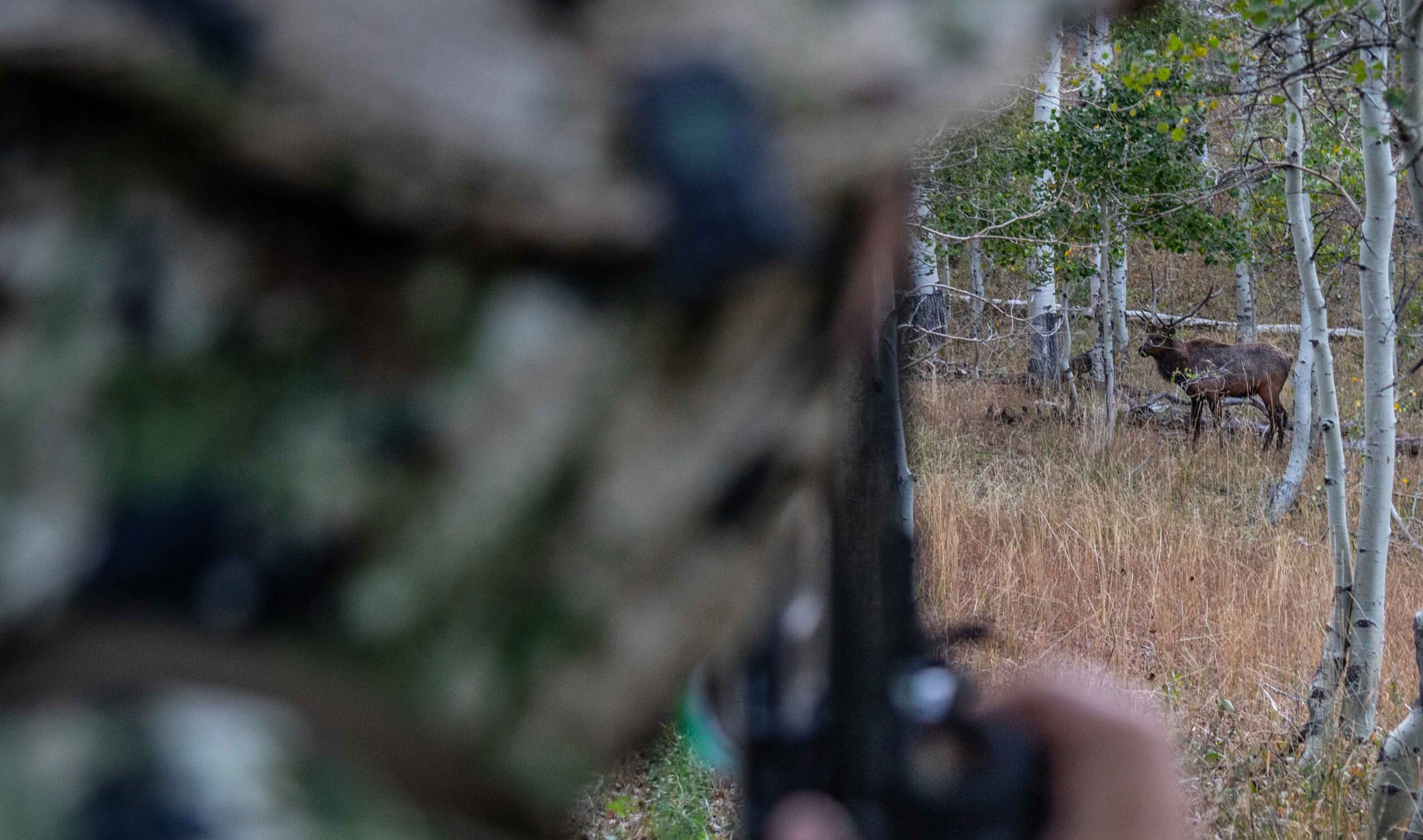
When you enter the red zone, every movement and sound is magnified tenfold.
10. Hit the Gas
Animals like bears, hogs, elk, javelina, and caribou tend to be on the move, walking and grazing. Expect them to move fast.
Here’s how I hunt these animals:
- Get an object between you and the animal
- If their head is moving, you should be moving
- If they’re feeding or looking away, cover ground
- Keep a solid backdrop behind you to prevent your silhouette from being exposed on the skyline
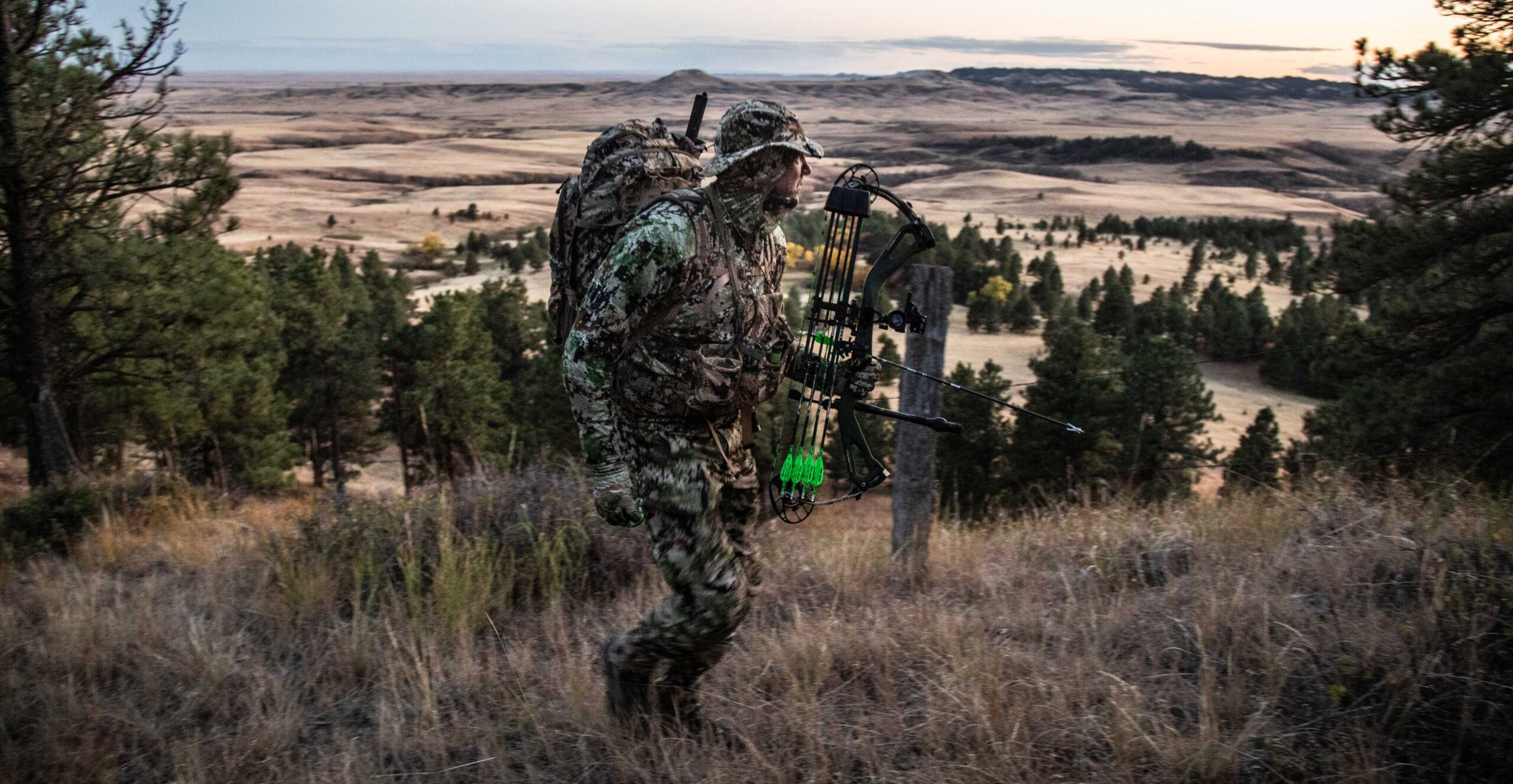
Dudley with his eyes fixated on a bull elk while making a quick move to better his stalking position.
Final Thoughts on the Spot and Stalk Method
When stalking, watch your steps, avoid surfaces that move or make noise, and watch the wind. The more time it takes to move in on an animal, the greater the likelihood the wind will change.
If you feel the wind shift, be ready to take the shot if you’re within range. You may only have a brief window of opportunity.
Most of my bowhunting success has come from fast, methodical stalks rather than calling to the bull. Calling increases the risk of him moving to me, given the wind and terrain are in his favor. It also fails to alert him or draw his attention to the source of the calls.
I’m proud of all my trophies, but the ones that really stand out are the ones I earned by playing a perfect game. Spotting and stalking is like chess, and I’m certain that if you put into action what you’ve learned here, you too will exclaim, “Checkmate!”
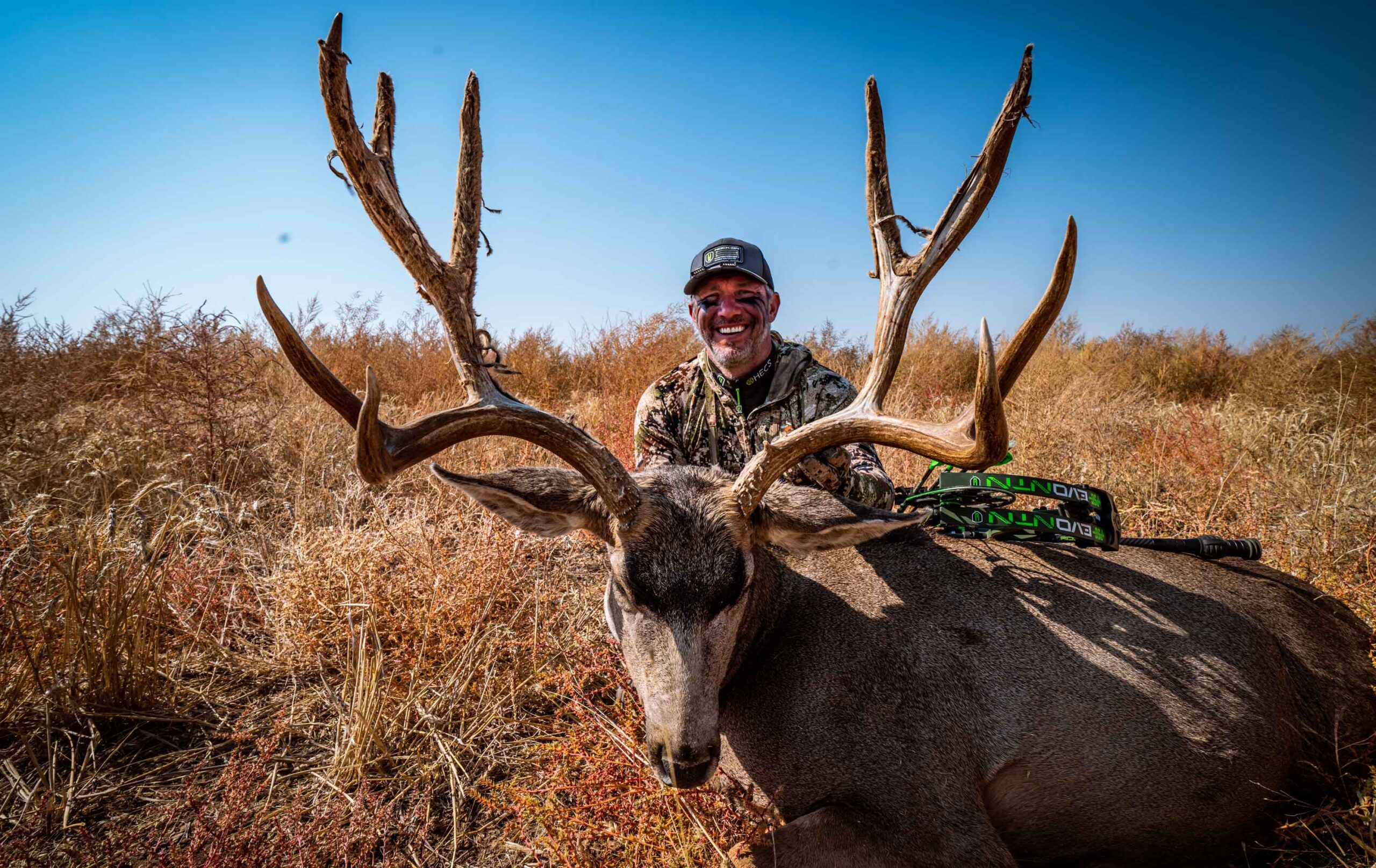







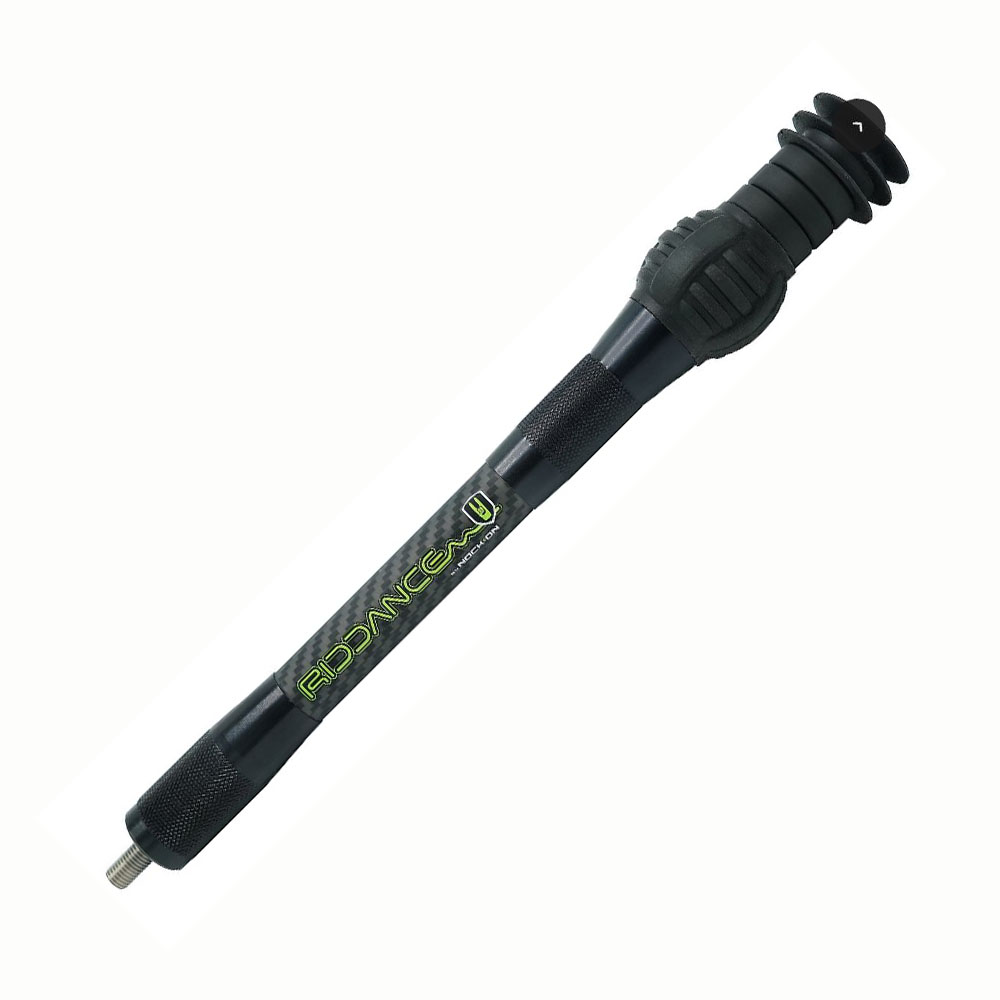

 massmonopoly
massmonopoly